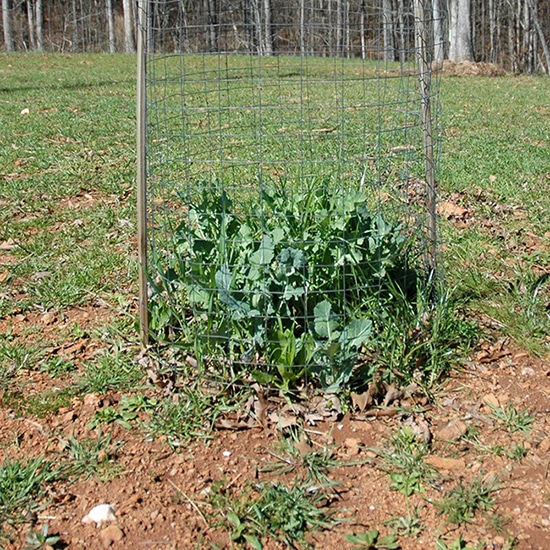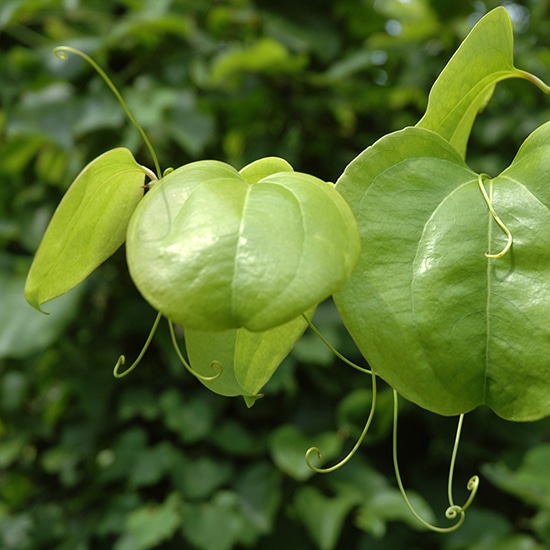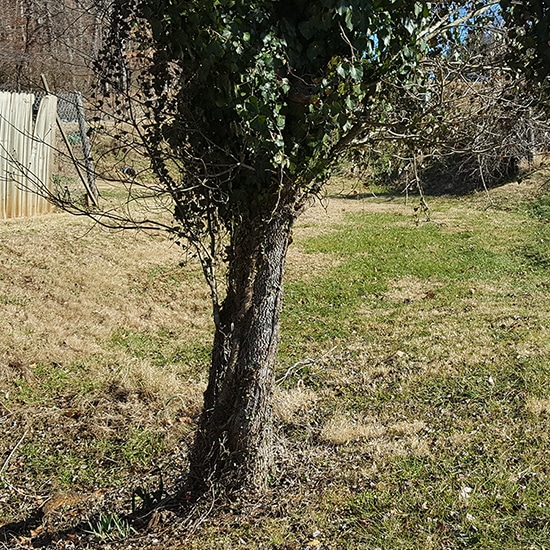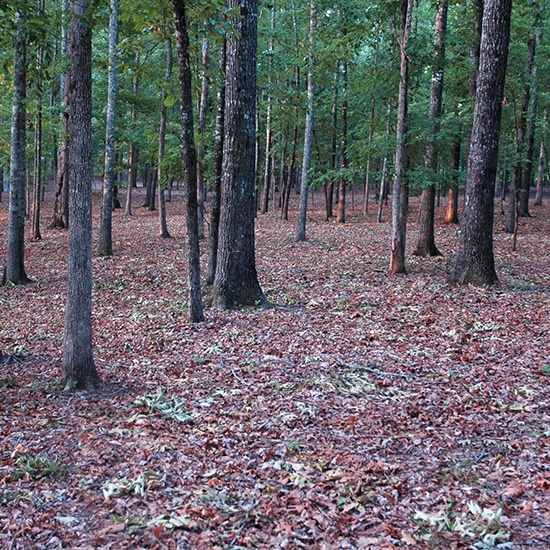Time is not kind to deer habitat. With each hour that passes, the plants growing where you hunt are losing their value to deer. Trees are rising, stretching upwards to fill vacant holes in the sky, spreading out branches to harvest sunlight. Shrubs, forbs and vines will soon be left in shade, which kills them. The understory – the zone where deer feed – will host little else than dead leaves, unless someone brings the sunlight down again.
Not only does this mean deer habitat declines steadily in quality unless it is maintained, it also means great stand sites and hubs of deer activity will change. As a forest ages, features that attract deer will shift in abundance and location. Movement patterns you counted on every season will fail you, but you may not realize why.
There are several ways to monitor deer habitat and detect warning signs that you’ve got a shortage of quality forage and cover where you hunt. While you’re out hunting sheds or working on stands this year, look for these 10 red flags that indicate you need to turn back the clock on your deer habitat.
No Lost Balls
I’ve seen everything from tennis balls to basketballs suggested for this test, but the idea is the same no matter your favorite gaming orb. Stand in the forest where you hunt and toss a ball in any random direction you like. If you can easily see it after it lands, then your deer habitat is lacking. There’s little or no understory forage or cover to hide it from you. But if you lose the ball, great!
You don’t have to literally carry a ball with you in the woods to do this. You can simply look around and ask yourself, “If I tossed a football that way, would I still be able to see it when it landed?” But if you really want to carry a ball and try this, I suggest a tennis ball. It’s small and will fit in your pocket, and it’s neon yellow, which is easier to spot at a distance.
Fawns Are Bedded in the Open
Pregnant does seek the best areas of cover in their home ranges to give birth. After it’s born, a whitetail fawn instinctively seeks cover and hides itself. If you see a fawn curled against a tree trunk or beside a fallen log, and it is otherwise clearly visible to you (and predators), then neither the doe nor the fawn were able to find what they were seeking in their home range. Your woods don’t offer enough fawning cover.
You don’t need to see a fawn to test this question. Simply look around your woods in spring. If you were a fawn, where would you hide? If you have to walk a long way to find a good hiding spot, that’s a red flag.

Fawns instinctively seek dense cover for hiding. If they’re hiding in the open, they didn’t find any cover, and that’s a major red flag.
Browse Cages Full, Food Plots Empty
A food plot browse exclosure is a simple, inexpensive wire cage that prevents deer from feeding in a small portion of a plot. The plants inside the cage provide a visual gauge of what the food plot would look like if deer were not browsing the crop. Here’s how to build one.
If the crop inside the cage is thick, tall and healthy, but the food plot outside the cage is mowed to dirt level, deer do not have enough food at that particular time of year. Remember, you cannot carry a deer population on food plots alone. Food plots should be supplemental to preferred forages and browse that naturally occur where you hunt. If food plots stay mowed or fail altogether due to browsing pressure, you need to increase natural forages.

Full cages in the middle of empty food plots are red flags indicating deer don’t have enough food options at that time of year.
Forest Cages Full, Woods Empty
Just as you can place a browse exclosure in your food plots, you can do the same thing in forests. Simply build a portable hoop of fencing wire and stake it in a relatively open area of the forest where the ground gets at least some sunlight during the day. Monitor it over the course of a growing season and beyond. If the cage fills up with tree seedlings, vines, broadleaf forbs or other plants while the area surrounding it remains open, that’s a red flag. Those plant species are in the seed bank and trying to grow, but deer are preventing their establishment outside the cage, which means they don’t have enough to eat.

Deer rely on preferred natural forages like this native butterfly pea vine. If the only place you can find species like this is inside a forest browse exclosure, that’s a red flag.
Too Many Islands in the Forest
While you’re walking the woods you hunt, do you ever notice floating “islands” of green vegetation above ground level? I’m talking about preferred viny forages like honeysuckle and greenbrier that have climbed above the reach of deer but only have leaves above that same level. Where deer can reach, these vines are stripped of foliage. This often looks like a ball or “island” of green forage overhead where the vine has climbed a shrub or sapling, and it’s a red flag.
When you see these, you can instantly increase available forage by hinge-cutting the structure the vine has climbed (as long as it’s a low-value tree or shrub you don’t mind cutting) and dropping the forage within reach of deer. Be sure not to cut the main vine in the process.

Greenbrier is a preferred deer forage in many regions and a good indicator species of deer browse pressure.
Shed Hunting is Easy
I always wear binoculars when I’m shed hunting. Sometimes you catch a glimpse of something shed-like at the edge of a food plot, on a hillside, or off in the distance, and binoculars help quickly determine if it’s what you think it is. The question is: How much of your hunting area can you cover with binoculars while shed-hunting?
If it doesn’t take you long to scan your hunting area for sheds because it’s mostly empty winter fields, wide open hardwood ridges and flats, or straw-carpeted pine plantations, then it’s too open. In the ideal deer habitat, shed hunting is difficult because there’s so much ground-level plant cover obscuring your view of those sheds. The good news is, when forage and cover are abundant, there will likely be more sheds to find, and they’ll be bigger!
Don’t forget: Prescribed fire conducted in the dormant season is a great way to encourage new cover, but also to address the problem of shed antlers hidden by cover. In newly burned areas, sheds are easy to spot.

Shed hunting is not easy in areas with great deer habitat. But prescribed fire is an excellent tool for maintaining that habitat, and it temporarily reveals shed antlers too.
The Hedges Are Trimmed
In an area with abundant forage and the right number of deer for the habitat, you should be able to find a diversity of plants and preferred deer forage species growing in the understory, and most of them will not show signs of having been browsed by deer. Plants recover quickly from a normal level of browse pressure by producing new shoots, stems and leaves.
But when forage is inadequate for the number of deer on the land, plants will be browsed faster than they can respond, and each plant will be browsed repeatedly. Those plants that are hardy enough to survive despite the constant attacks, such as hardwood seedlings, will looked “hedged,” which means their stem ends are blunt and enlarged from constantly having new growth bitten off. If you’re finding a lot of hedged plant species where you hunt, that’s a red flag.

This branch of a crabapple seedling is “hedged” from having new growth repeatedly browsed by deer.
Deer Are Eating Junk Food
Deer rarely die of actual starvation from an empty stomach. More often they die slowly of malnutrition, but their stomachs are actually full. They’re just full of the worst stuff left in their habitat, the nearly indigestible plant parts and species. When you see signs that deer are eating red cedar needles, pine needles, or other tough or bad-tasting plants or plant parts, then deer lack adequate food at that time of year.
Sometimes and in some regions, this is normal. In winter in the North, deer often browse on conifer needles, and digestion of this coarse material produces heat, which can help northern deer get through winter. However, even in the north, deer will likely eat less of this kind of browse if they have access to more palatable browse species and winter food plot forages in abundance.

QDMA member Moriah Boggess took this photo in a suburban area he hunts. English ivy is poor deer food, but deer will eat it if they can’t find anything else. They have stripped the leaves off these ivy vines near ground level.
Acorns Rule
Are deer less attracted to the land you hunt in years when the dominant mast producing trees fail to make a decent acorn crop? If the answer is yes, that’s a red flag that the habitat where you hunt is not great for deer.
Deer certainly love acorns, and acorns can be important for building winter fat stores. But in areas where hardwood forests dominate and there are few forest openings, deer health is hand-cuffed to the inconsistent and unpredictable acorn roller-coaster. In good acorn years, deer prosper. In acorn failures, deer suffer. It shouldn’t be that way. With adequate openings and early successional cover, natural forages protect deer from acorn failures. They are no longer dependent on unreliable acorn crops. Acorns become a bonus, not the daily bread. Make it that way where you hunt.
Picnicking Paradise
When the average non-hunter thinks of “wildlife habitat,” I believe they picture endless cathedrals of giant oaks towering over park-like woodlands, the kind of place where you and your family could take a nice stroll, spread out a picnic blanket and toss a frisbee around. Unfortunately, such a scenic place is barren in the eyes of most wildlife species, especially those that thrive in the understory, like deer. There’s little for them to eat in a place like this, much less bed down in.
We all enjoy pretty woods, and it’s okay to have some woods like this where you hunt. But if such woods cover the majority of the neighborhood in which your hunting land lies, the deer that live there are on low wages. Great deer habitat is not open to easy strolling. There are vines, thorny briars, dense wildflowers and thick native grasses. There are shrubs that produce berries and thickets that hide fawns.

It’s fine to have a few areas of mature oaks in the mix, but if open woods like these dominate the landscape where you hunt, deer are living in poverty.
And that’s really the solution to all the above red flag conditions: Produce more areas of this early successional cover by opening new areas to sunlight. The habitat management area of this website is full of good techniques for doing this, from prescribed fire to timber stand improvement, and many of these techniques are cheap and easy to implement.
Don’t be intimidated if your hunting land is festooned with red flags. Take small steps, plan one project at a time, and start turning those red flags green today.
